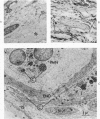Abstract
The pulmonary effects of endotoxin shock were investigated in dogs by a combination of anatomic and physiologic technics. Shock was produced in 14 dogs by injecting Escherichia coli lipopolysaccharide intravenously. Three dogs in hypovolemic shock and 6 untreated dogs served as controls. Colloidal carbon was injected intravenously to detect sites of pathologic increase in vascular permeability. During the first hour of endotoxin shock, bronchial venules allowed carbon and blood elements to traverse their walls, whereas no leakage of these large particles or ultrastructural changes could be detected in the alveolar walls. Only after the first hour was bronchial venular leakage accompanied by focal degenerative changes in the alveolar endothelium, focal interstitial edema in the alveolar septum and sequestration of damaged leukocytes in the alveolar capillaries. In contrast to these observations in endotoxin shock, control dogs in hypovolemic shock did not show bronchial venous leakage. Our findings suggest that the leakage of bronchial venules may be involved in the pathogenesis of pulmonary interstitial edema caused by endotoxin shock.
Full text
PDF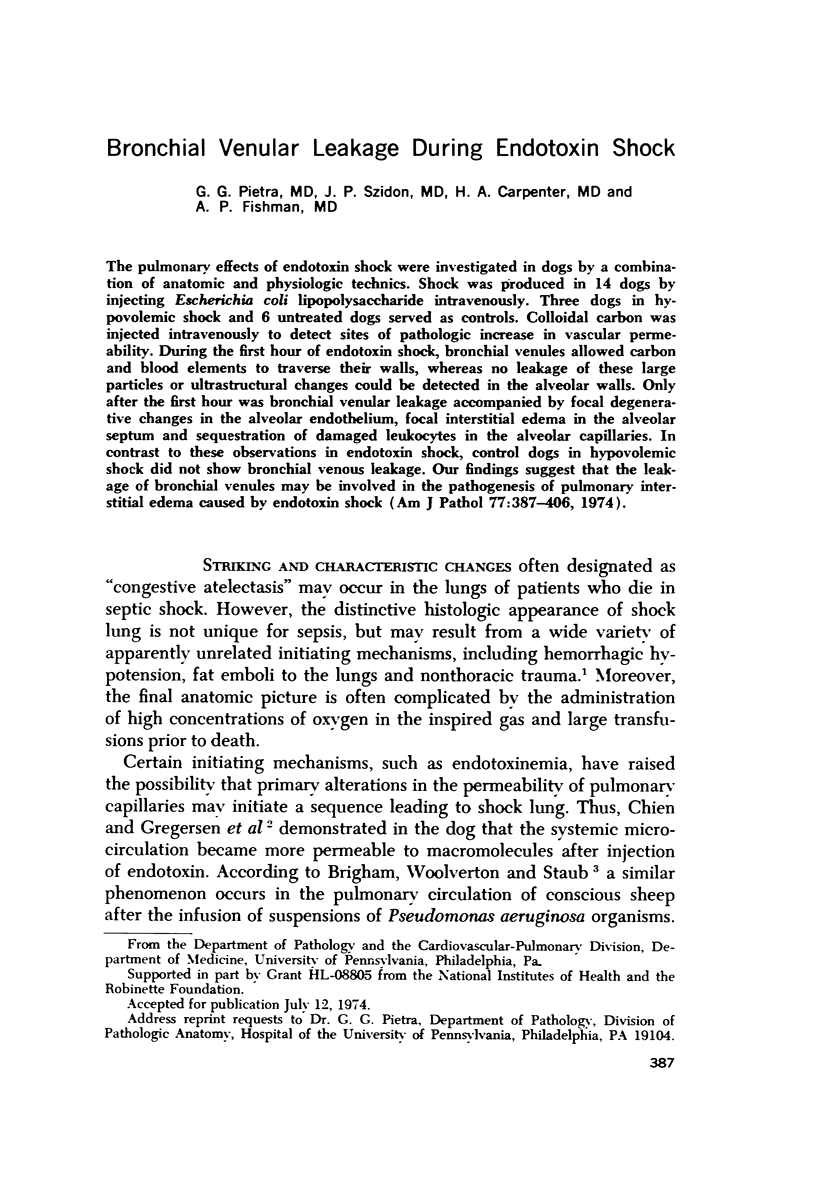
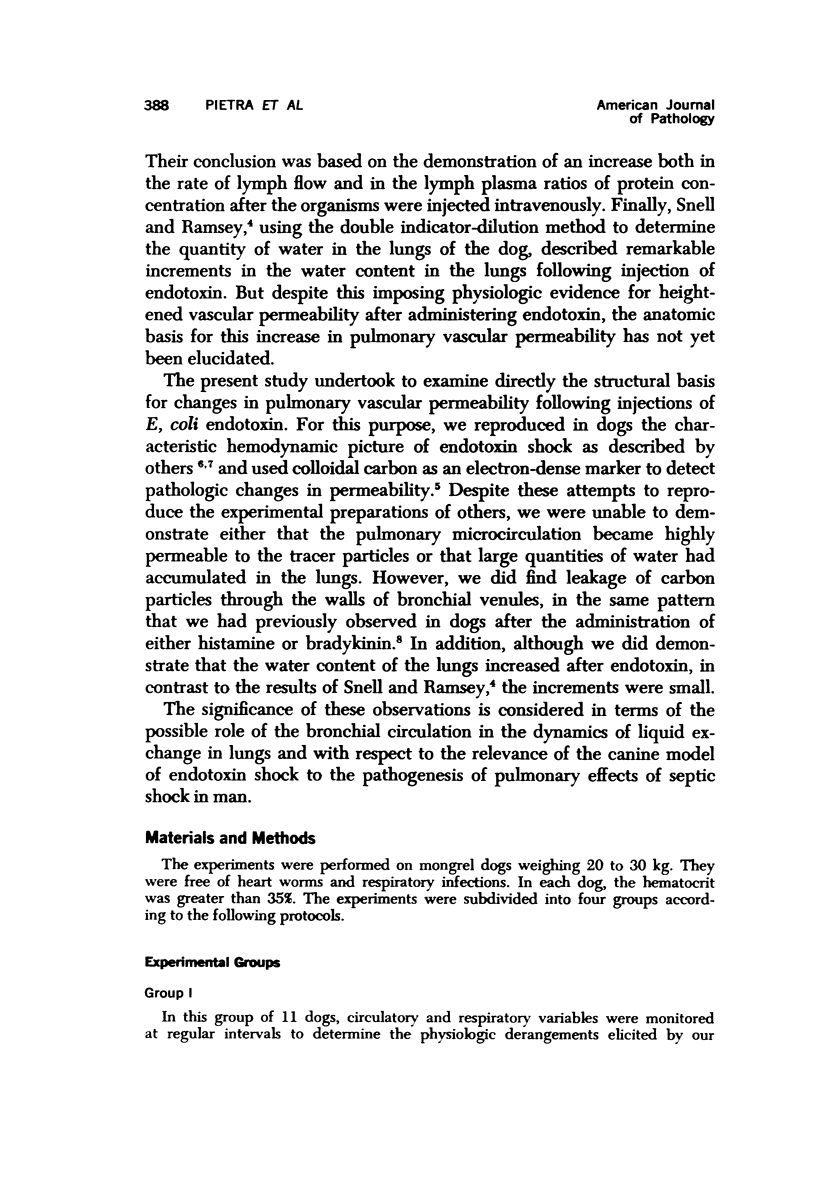
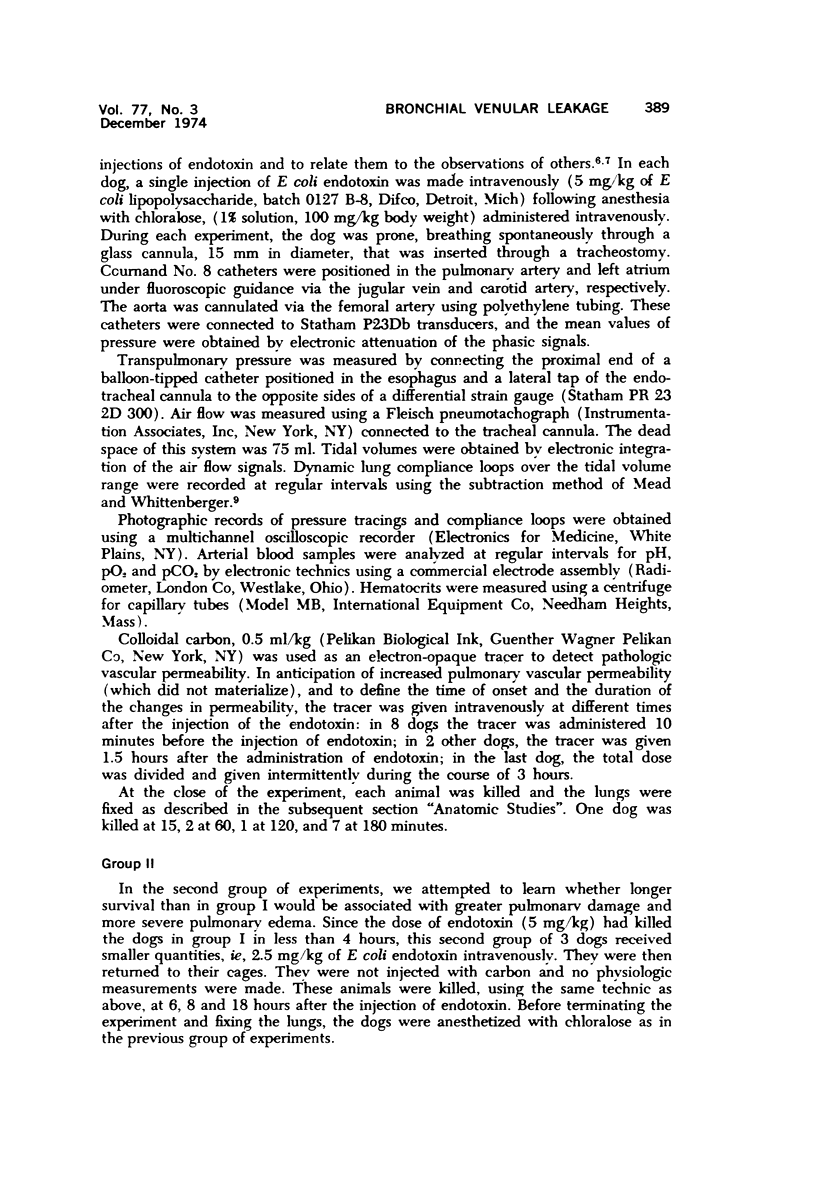
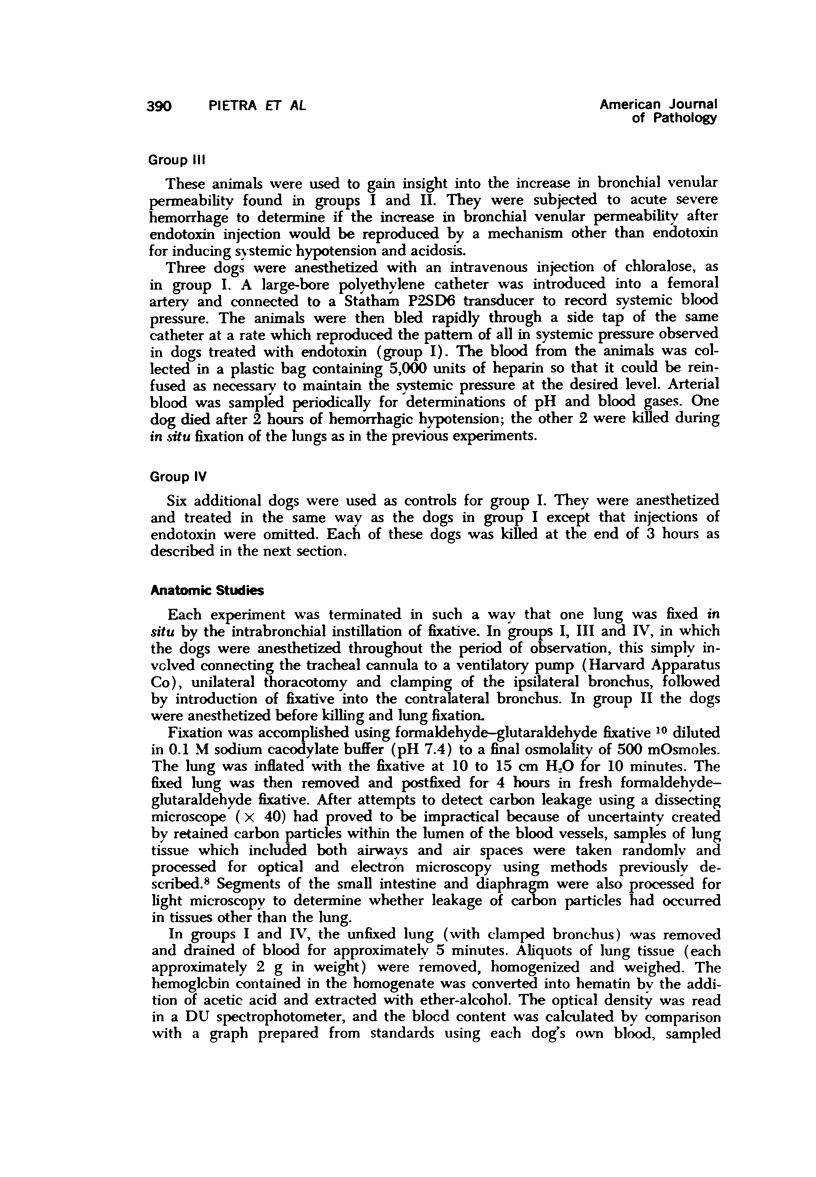
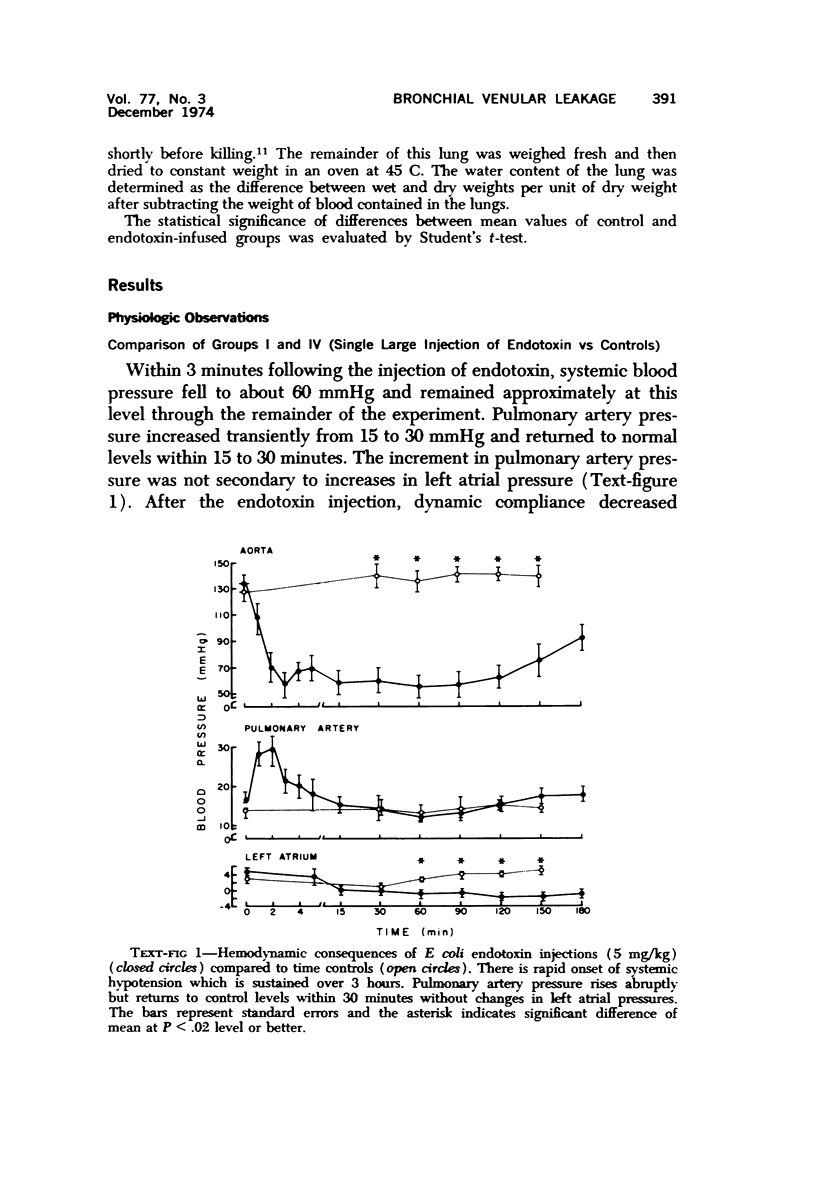
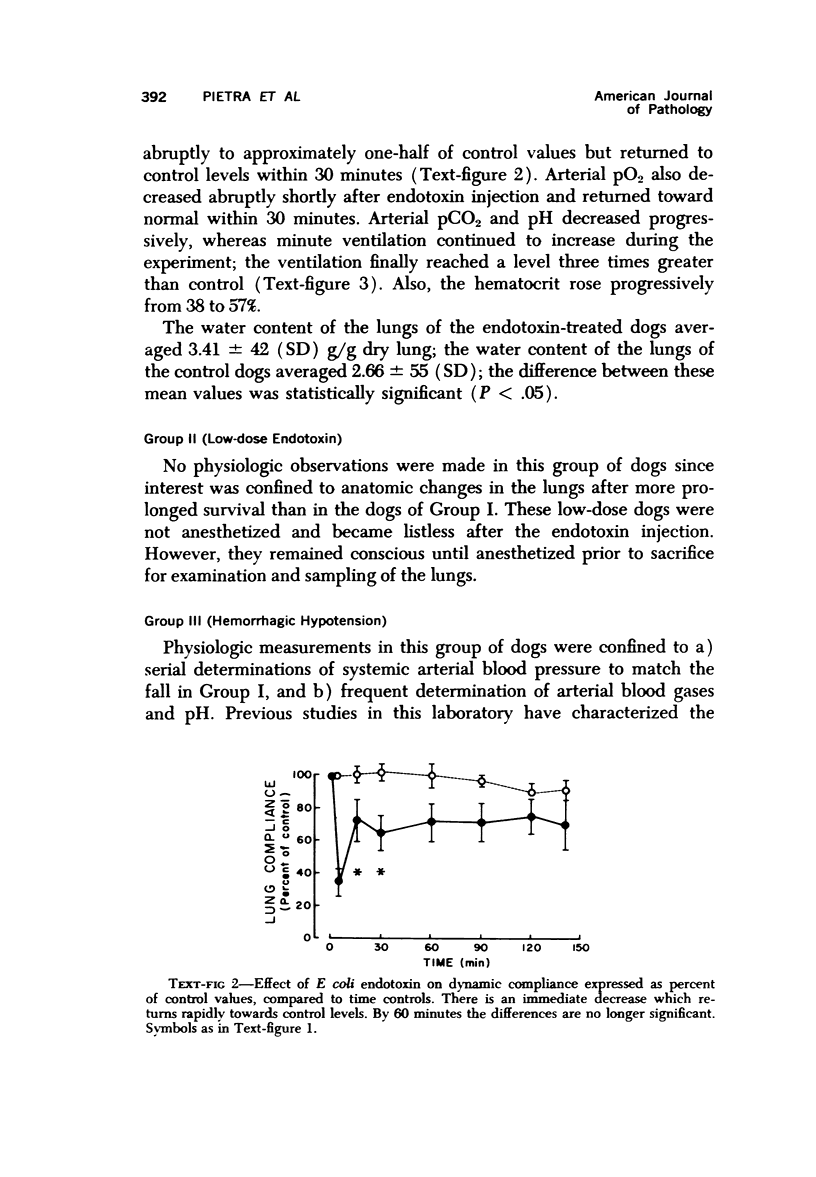
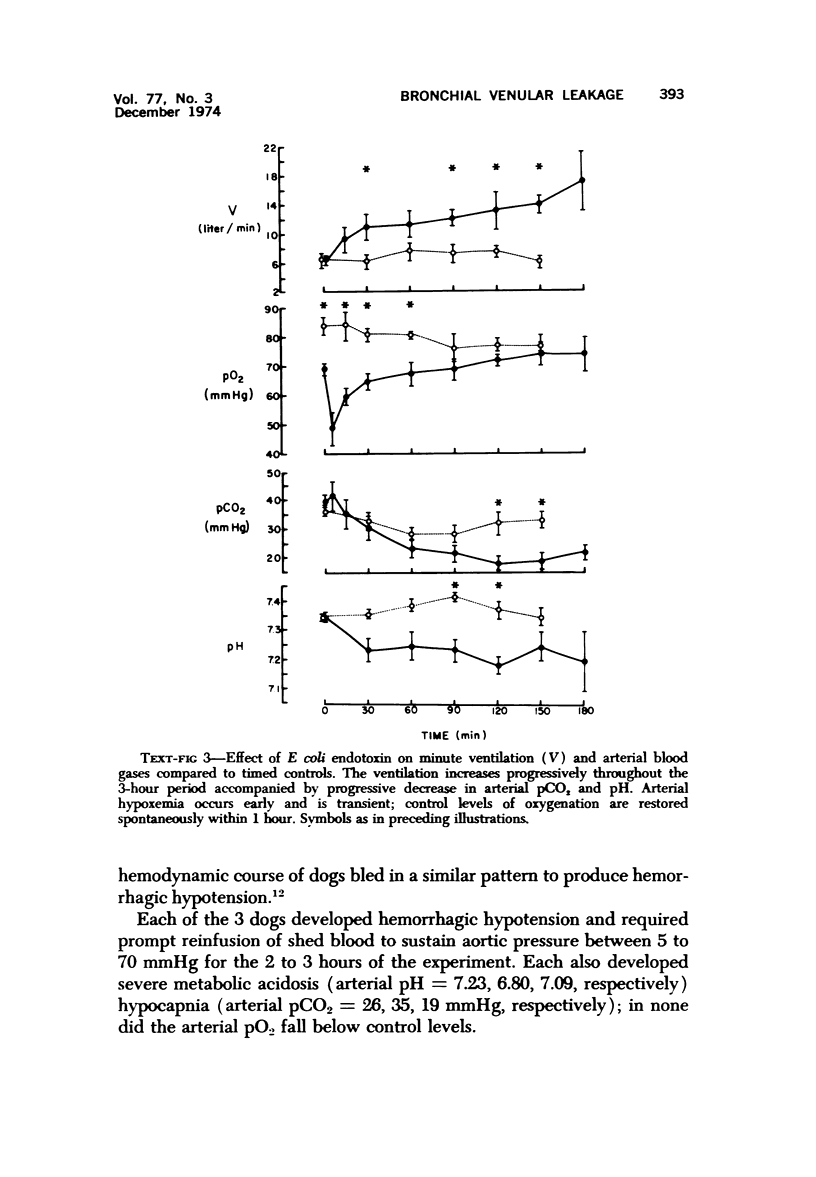
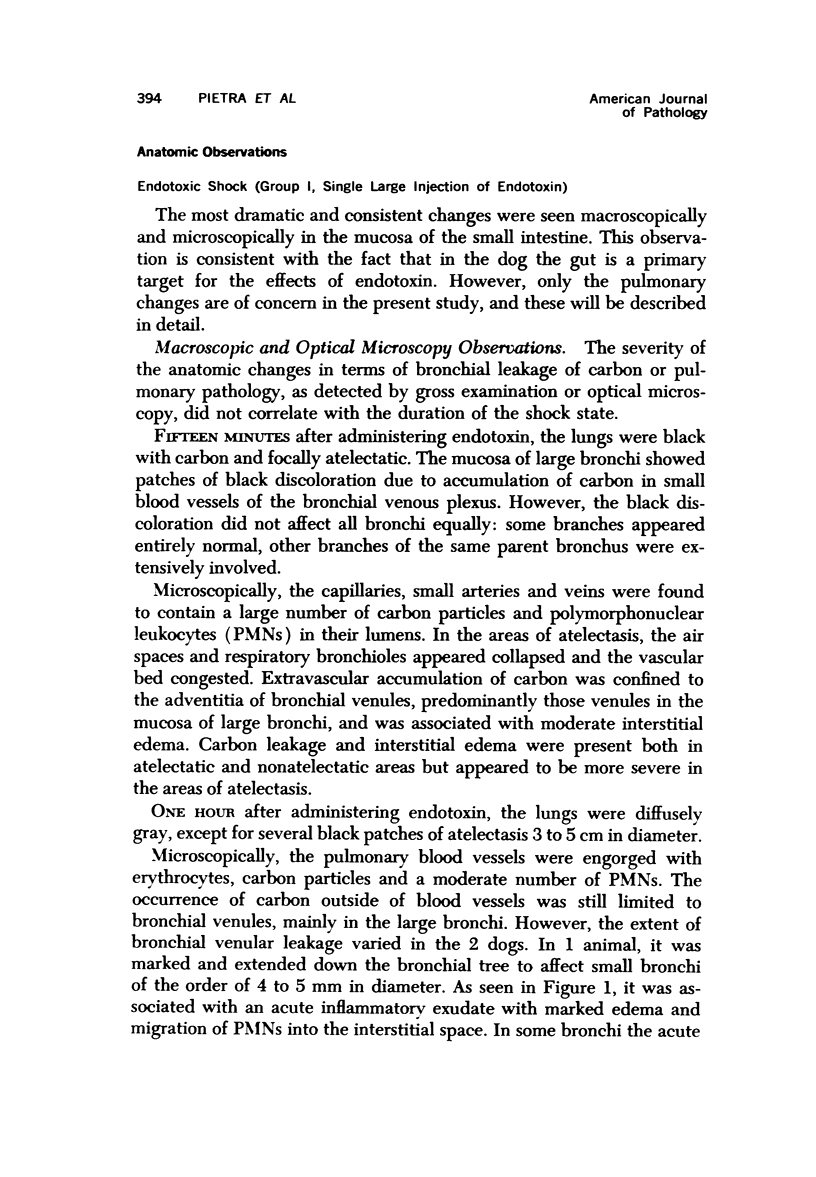
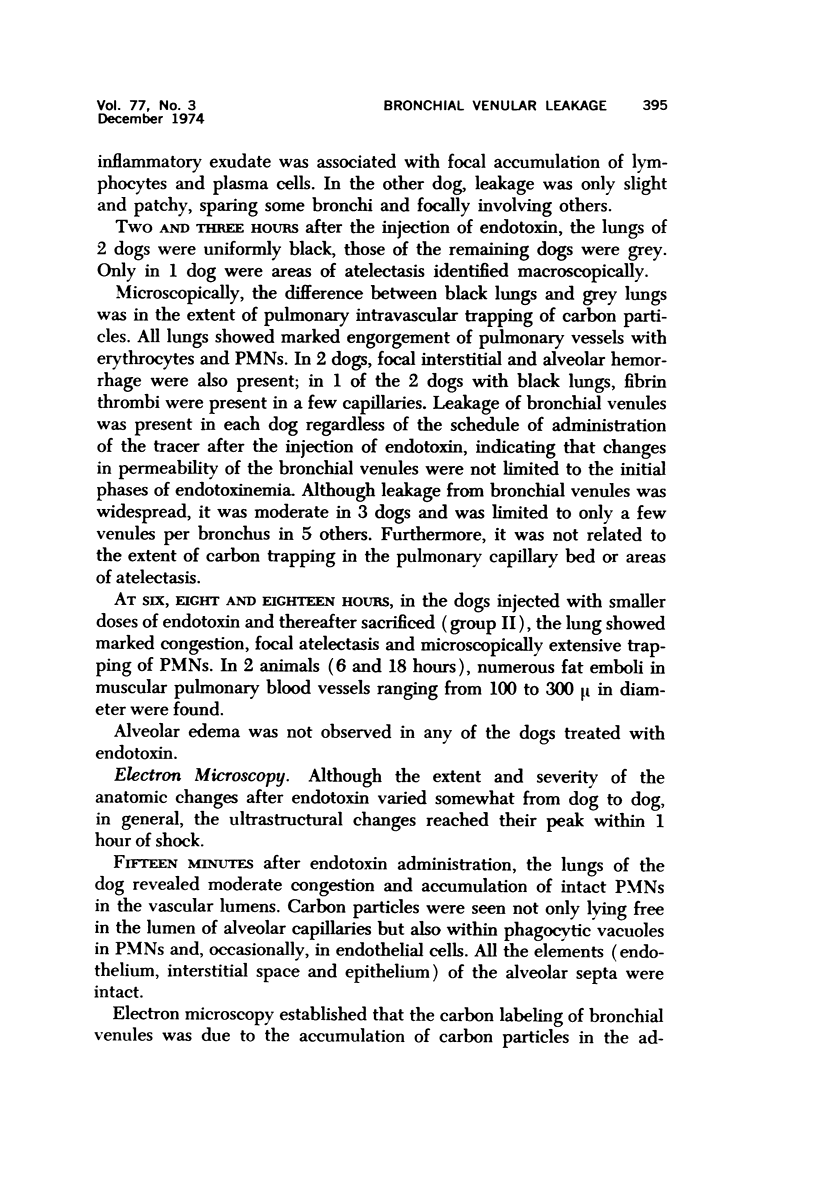
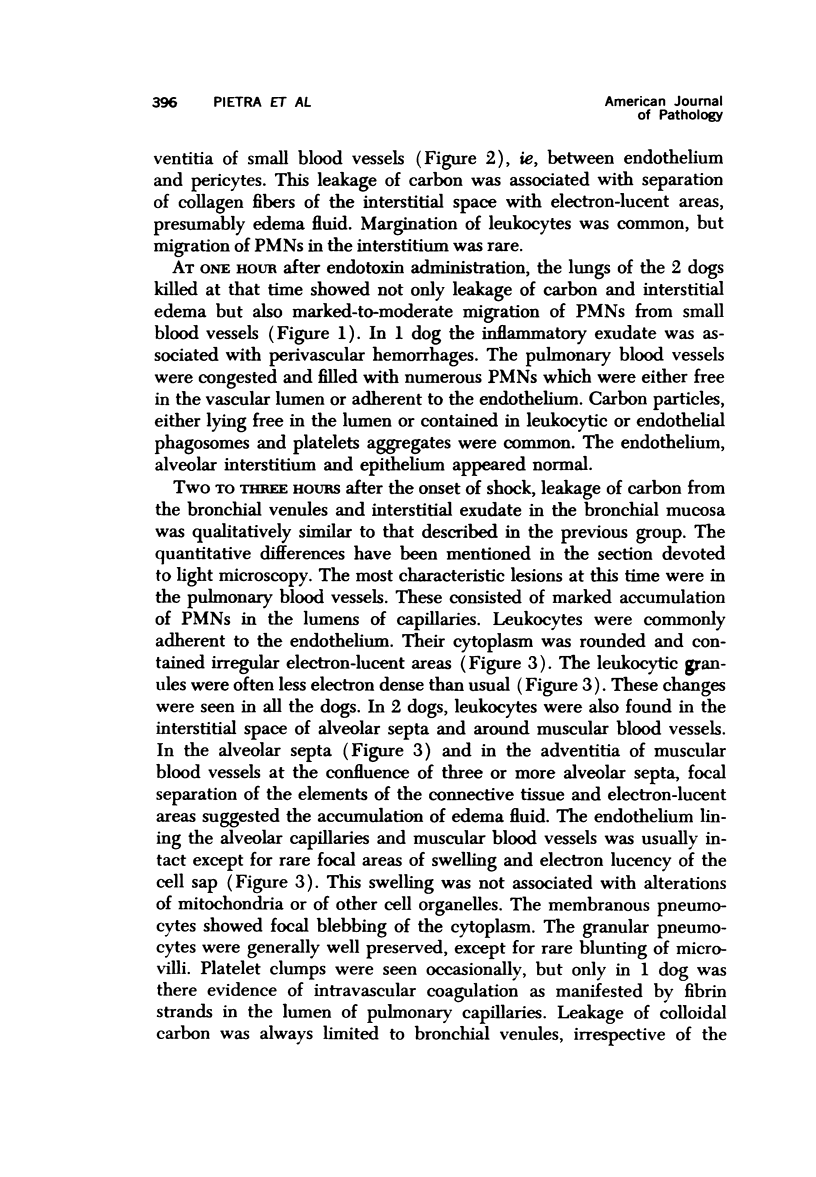
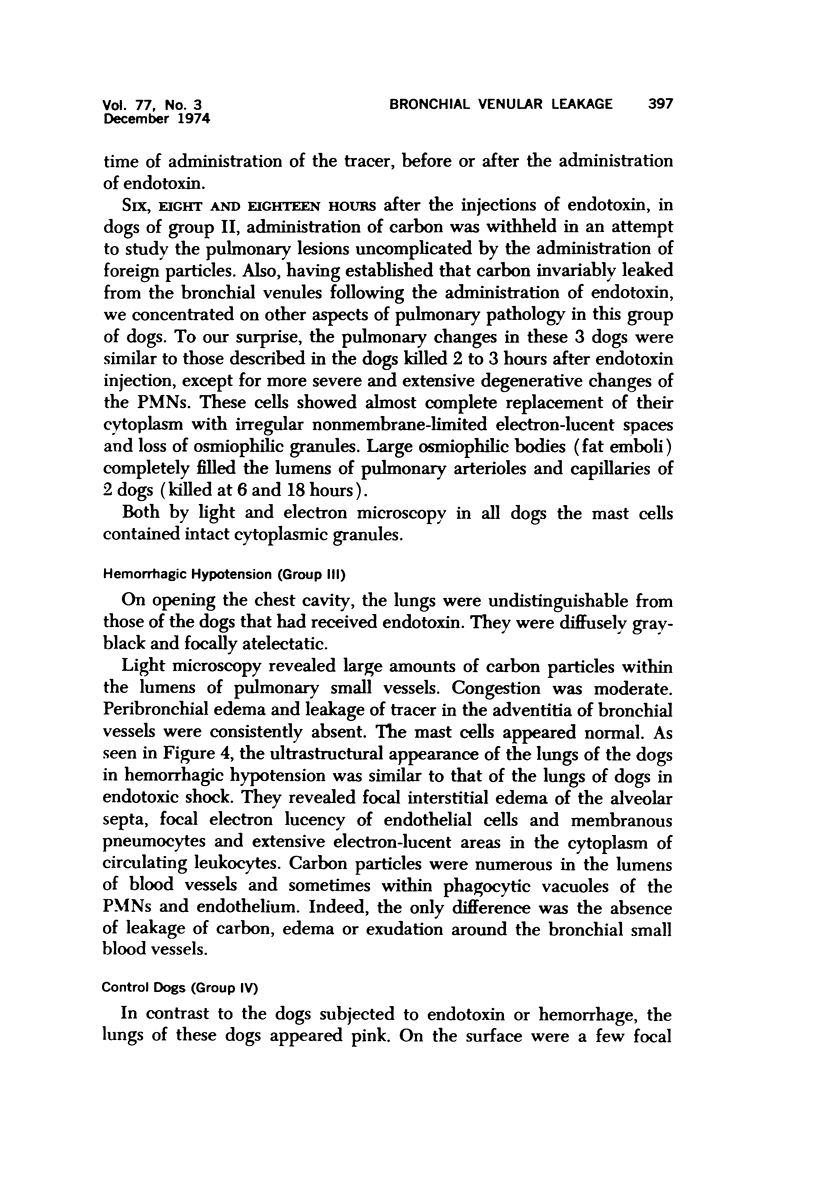
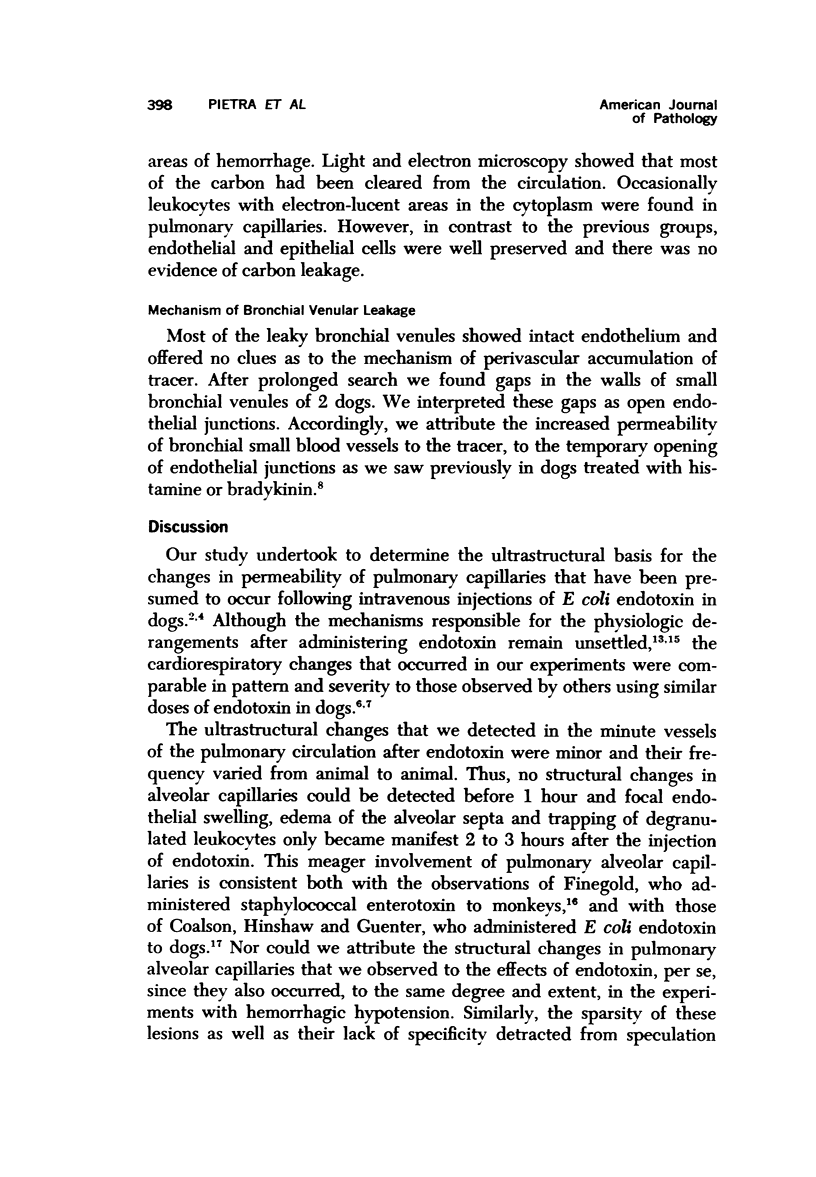
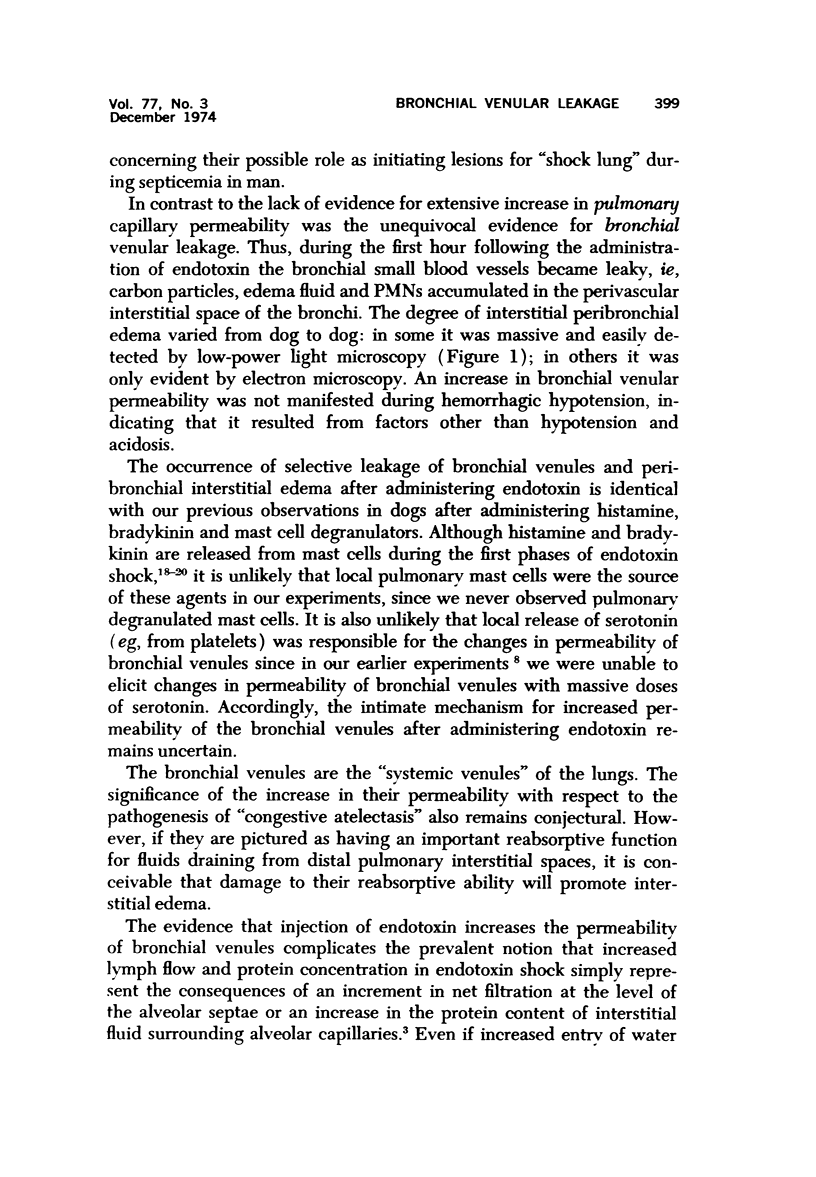
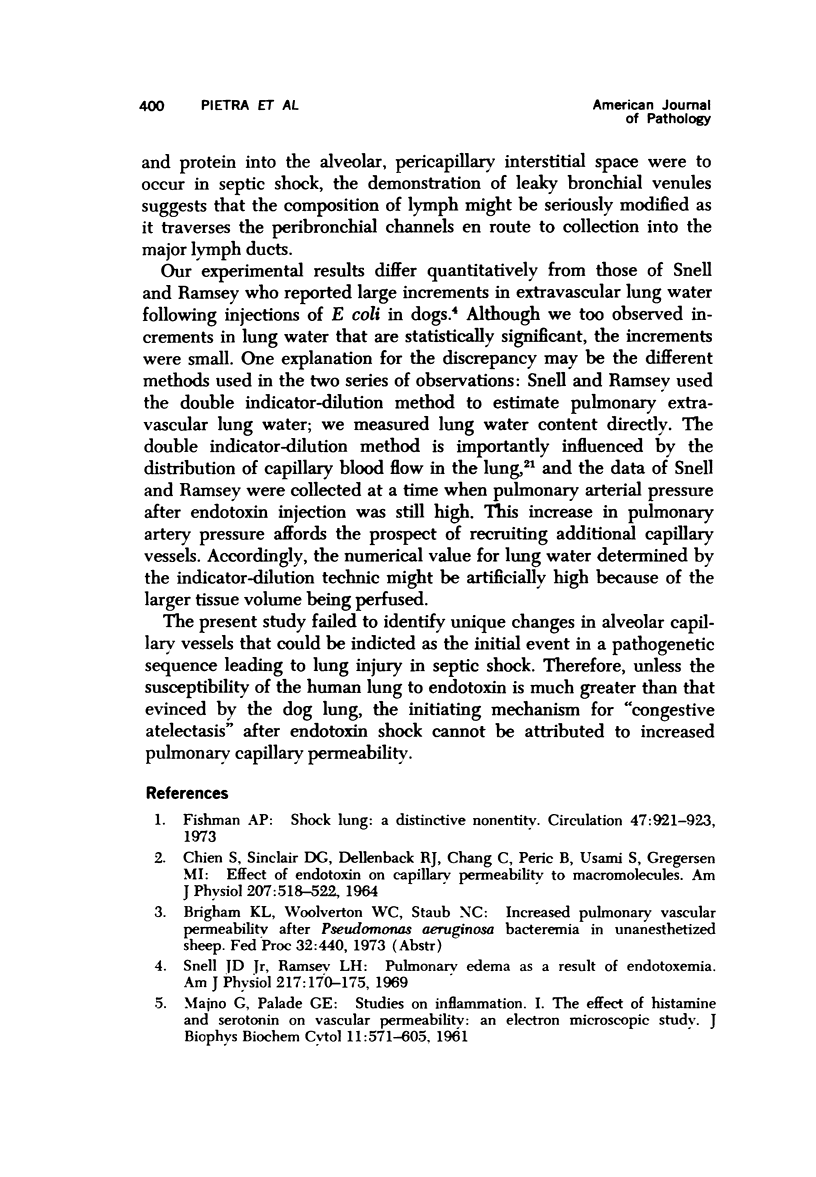
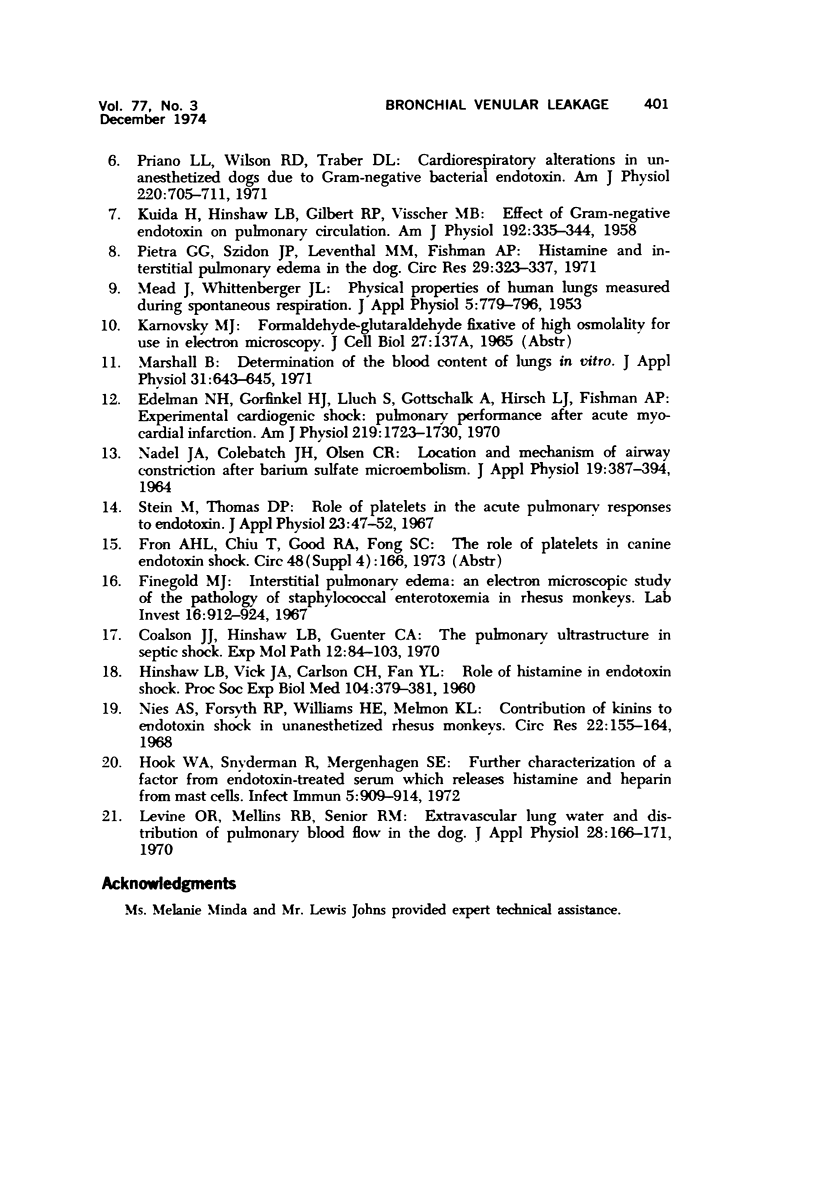
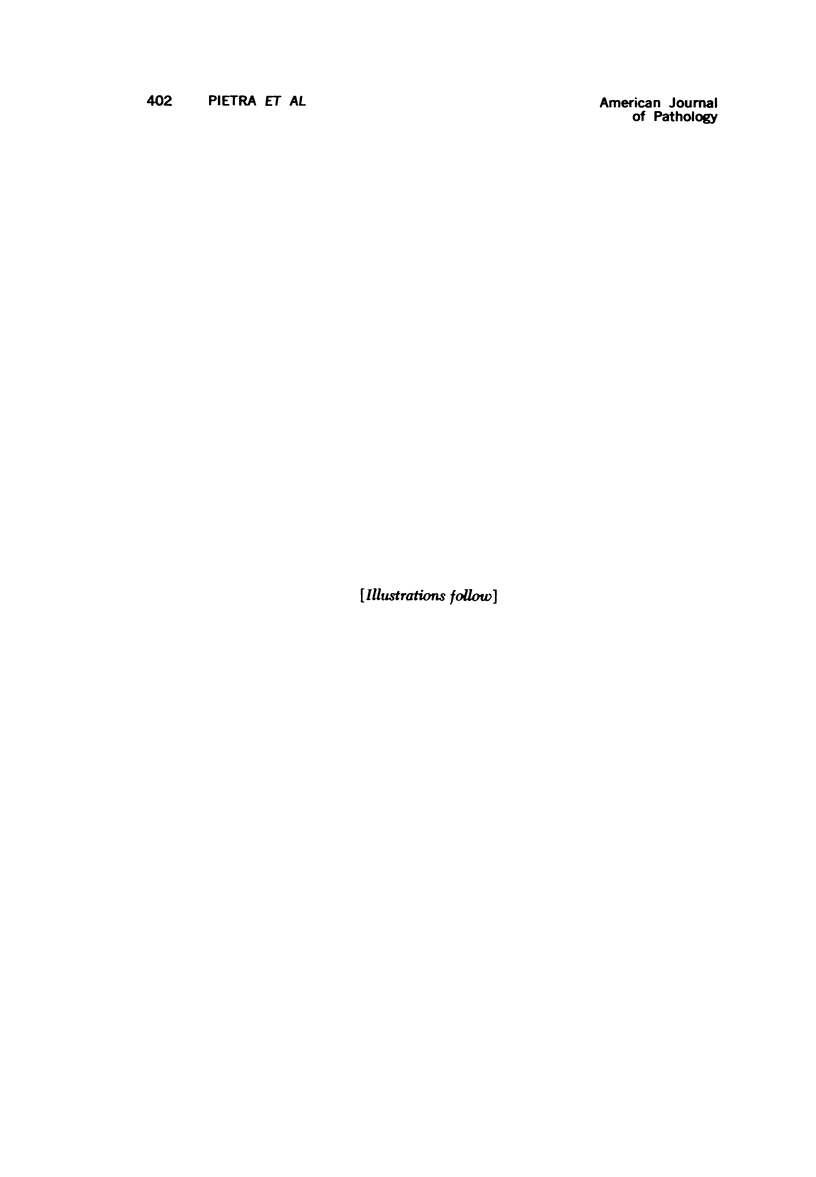
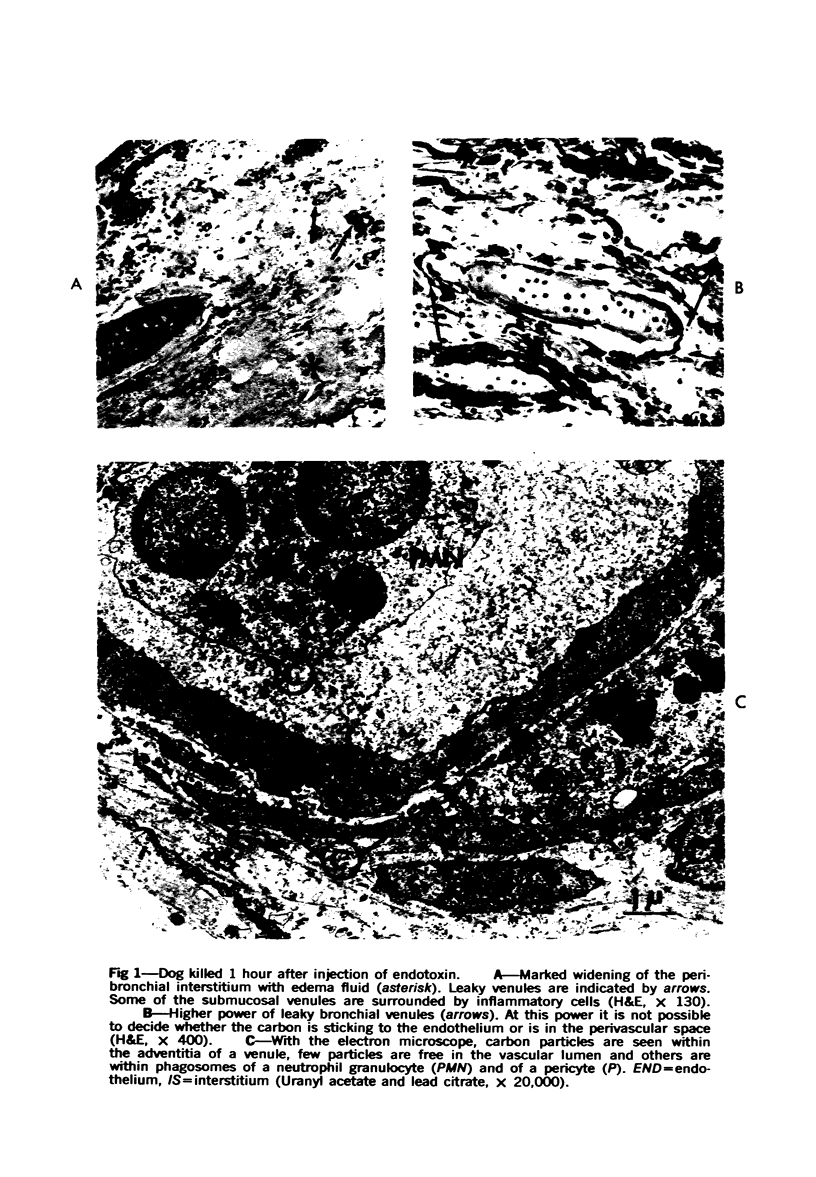
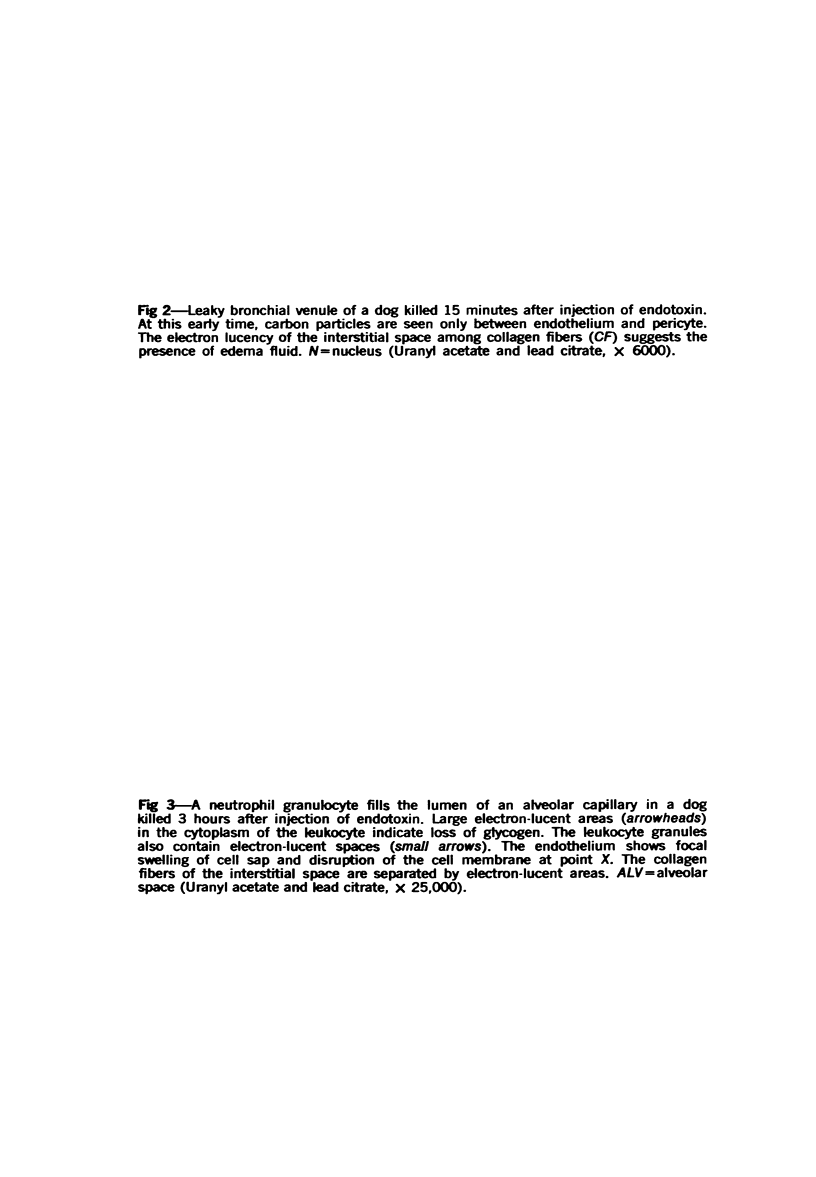
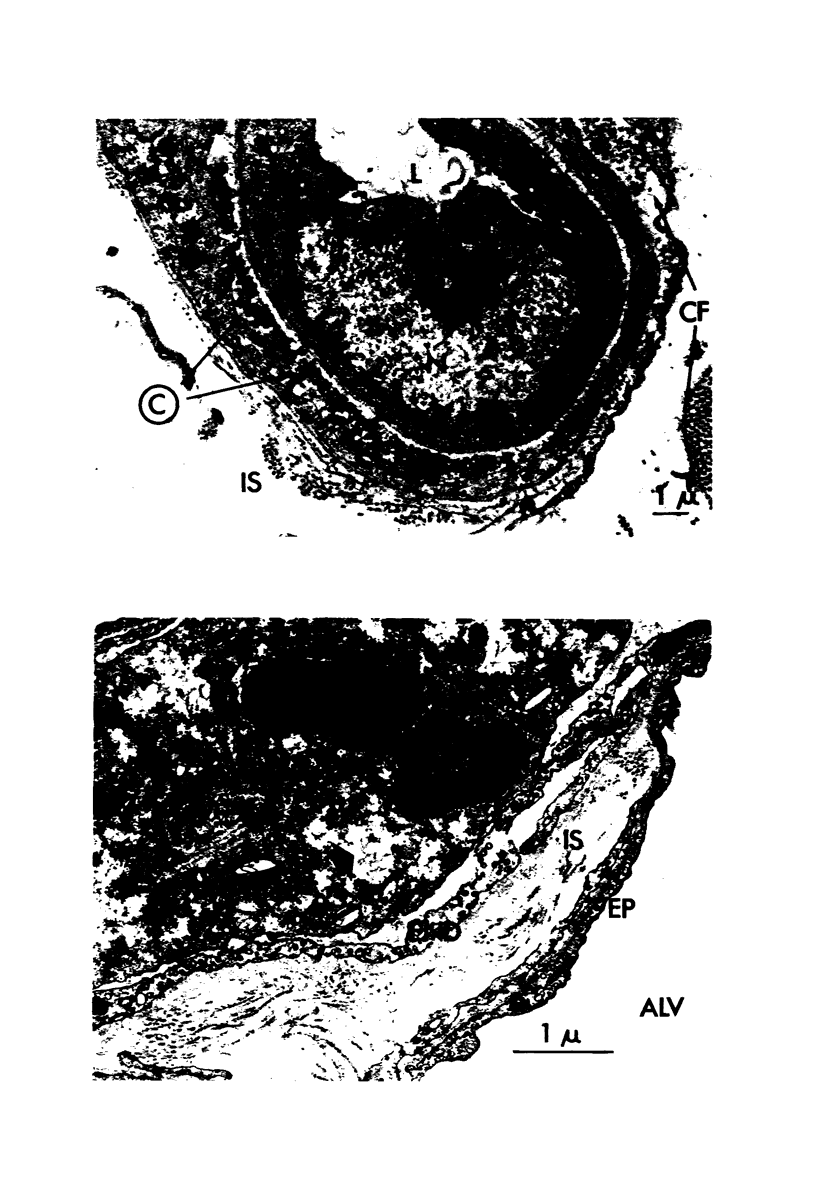
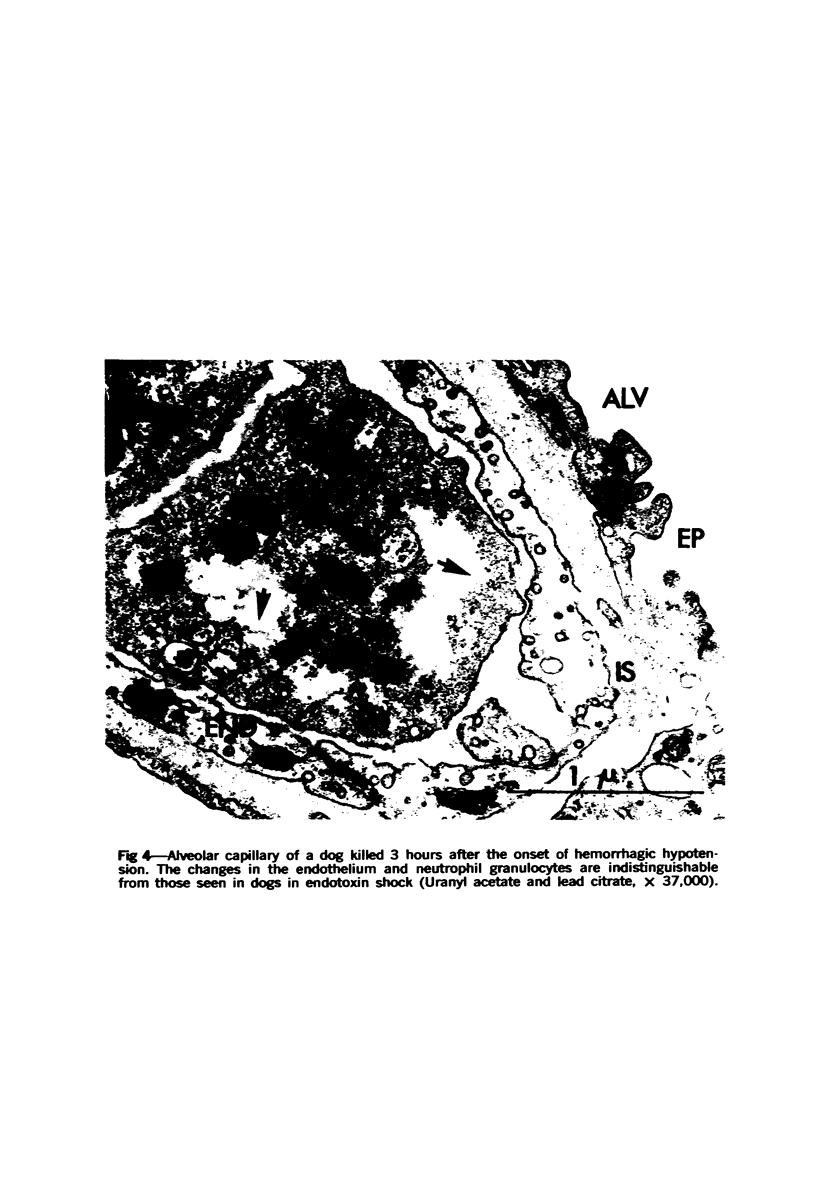
Images in this article
Selected References
These references are in PubMed. This may not be the complete list of references from this article.
- CHIEN S., SINCLAIR D. G., DELLENBACK R. J., CHANG C., PERIC B., USAMI S., GREGERSEN M. I. EFFECT OF ENDOTOXIN ON CAPILLARY PERMEABILITY TO MACROMOLECULES. Am J Physiol. 1964 Sep;207:518–522. doi: 10.1152/ajplegacy.1964.207.3.518. [DOI] [PubMed] [Google Scholar]
- Coalson J. J., Hinshaw L. B., Guenter C. A. The pulmonary ultrastructure in septic shock. Exp Mol Pathol. 1970 Feb;12(1):84–103. doi: 10.1016/0014-4800(70)90077-8. [DOI] [PubMed] [Google Scholar]
- Edelman N. H., Gorfinkel H. J., Lluch S., Gottschalk A., Hirsch L. J., Fishman A. P. Experimental cardiogenic shock: pulmonary performance after acute myocardial infarction. Am J Physiol. 1970 Dec;219(6):1723–1730. doi: 10.1152/ajplegacy.1970.219.6.1723. [DOI] [PubMed] [Google Scholar]
- Finegold M. J. Interstitial pulmonary edema. An electron microscopic study of the pathology of staphylococcal enterotoxemia in Rhesus monkeys. Lab Invest. 1967 Jun;16(6):912–924. doi: 10.21236/ad0811615. [DOI] [PubMed] [Google Scholar]
- Fishman A. P. Shock lung: a distinctive nonentity. Circulation. 1973 May;47(5):921–923. doi: 10.1161/01.cir.47.5.921. [DOI] [PubMed] [Google Scholar]
- HINSHAW L. B., VICK J. A., CARLSON C. H., FAN Y. L. Role of histamine in endotoxin shock. Proc Soc Exp Biol Med. 1960 Jul;104:379–381. doi: 10.3181/00379727-104-25843. [DOI] [PubMed] [Google Scholar]
- Hook W. A., Snyderman R., Mergenhagen S. E. Further characterization of a factor from endotoxin-treated serum which releases histamine and heparin from mast cells. Infect Immun. 1972 Jun;5(6):909–914. doi: 10.1128/iai.5.6.909-914.1972. [DOI] [PMC free article] [PubMed] [Google Scholar]
- KUIDA H., HINSHAW L. B., GILBERT R. P., VISSCHER M. B. Effect of gram-negative endotoxin on pulmonary circulation. Am J Physiol. 1958 Feb;192(2):335–344. doi: 10.1152/ajplegacy.1958.192.2.335. [DOI] [PubMed] [Google Scholar]
- Levine O. R., Mellins R. B., Senior R. M. Extravascular lung water and distribution of pulmonary blood flow in the dog. J Appl Physiol. 1970 Feb;28(2):166–171. doi: 10.1152/jappl.1970.28.2.166. [DOI] [PubMed] [Google Scholar]
- MAJNO G., PALADE G. E. Studies on inflammation. 1. The effect of histamine and serotonin on vascular permeability: an electron microscopic study. J Biophys Biochem Cytol. 1961 Dec;11:571–605. doi: 10.1083/jcb.11.3.571. [DOI] [PMC free article] [PubMed] [Google Scholar]
- Marshall B. E. Determination of the blood content of lungs in vitro. J Appl Physiol. 1971 Oct;31(4):643–645. doi: 10.1152/jappl.1971.31.4.643. [DOI] [PubMed] [Google Scholar]
- NADEL J. A., COLEBATCH J. H., OLSEN C. R. LOCATION AND MECHANISM OF AIRWAY CONSTRICTION AFTER BARIUM SULFATE MICROEMBOLISM. J Appl Physiol. 1964 May;19:387–394. doi: 10.1152/jappl.1964.19.3.387. [DOI] [PubMed] [Google Scholar]
- Nies A. S., Forsyth R. P., Williams H. E., Melmon K. L. Contribution of kinins to endotoxin shock in unanesthetized Rhesus monkeys. Circ Res. 1968 Feb;22(2):155–164. doi: 10.1161/01.res.22.2.155. [DOI] [PubMed] [Google Scholar]
- Pietra G. G., Szidon J. P., Leventhal M. M., Fishman A. P. Histamine and interstitial pulmonary edema in the dog. Circ Res. 1971 Oct;29(4):323–337. doi: 10.1161/01.res.29.4.323. [DOI] [PubMed] [Google Scholar]
- Priano L. L., Wilson R. D., Traber D. L. Cardiorespiratory alterations in unanesthetized dogs due to gram-negative bacterial endotoxin. Am J Physiol. 1971 Mar;220(3):705–711. doi: 10.1152/ajplegacy.1971.220.3.705. [DOI] [PubMed] [Google Scholar]
- Snell J. D., Jr, Ramsey L. H. Pulmonary edema as a result of endotoxemia. Am J Physiol. 1969 Jul;217(1):170–175. doi: 10.1152/ajplegacy.1969.217.1.170. [DOI] [PubMed] [Google Scholar]
- Stein M., Thomas D. P. Role of platelets in the acute pulmonary responses to endotoxin. J Appl Physiol. 1967 Jul;23(1):47–52. doi: 10.1152/jappl.1967.23.1.47. [DOI] [PubMed] [Google Scholar]






